Rivers Lab
Printer CopyFlume Experiments
Set up a mini-flume. Calculate the Reynolds number and the Froude number for water flowing through the flume. Re = V*R*ρ/μ where V is velocity, R is hydraulic radius R=A/P=w*d/(w+2d), ρ is water density (1 g/cm3), μ is dynamic viscosity (1 mPa*s = 1 g/m/s = 0.01 g/cm/s), w is width, and d is depth. Fr = V/(d*g)1/2 where g is gravity. What do these numbers tell you about the flow regime in the flume? Are they similar or different from what you would expect to find in a natural river?Russian River Hydrology
For some context before we go out to look at Copeland Creek, consider that it eventually drains into the Russian River. The drainage divide between the Russian River and Petaluma River is just a couple miles south of SSU. The Russian River has a gauge at Guerneville (location map). The site description mentions that it has a drainage area of 1,338 mi2. The data below show the conditions in the Russian River before, during, and after the recent rainstorm. The Santa Rosa airport recorded rain from about 7pm October 3rd, 2008 till 11:30pm or so.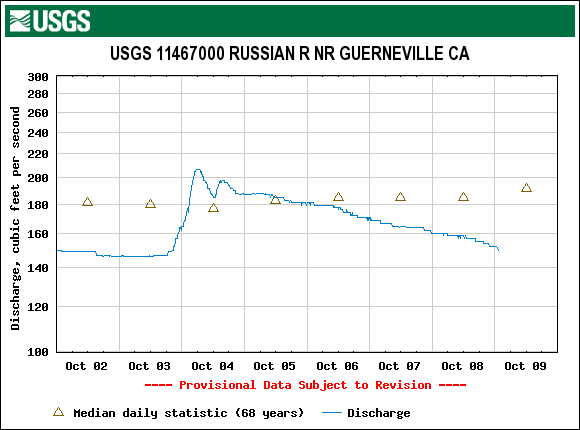
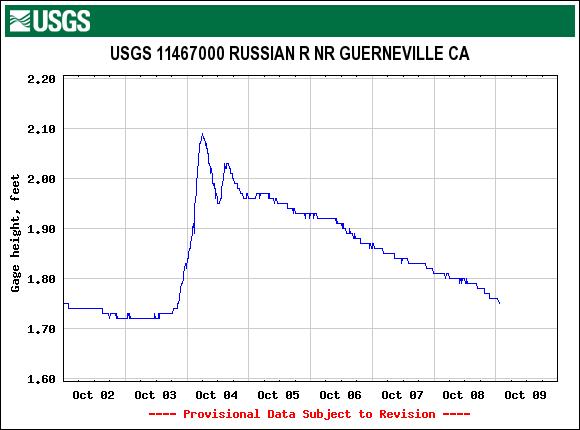
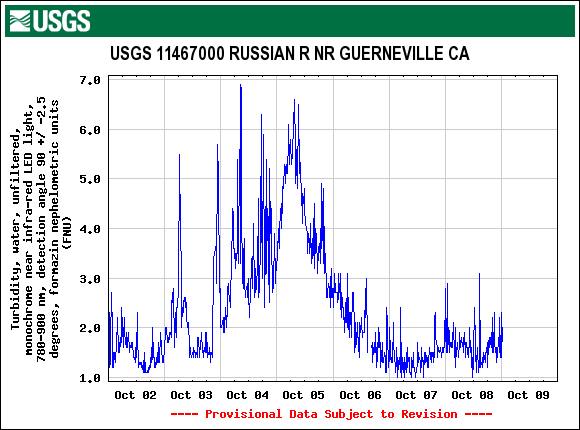


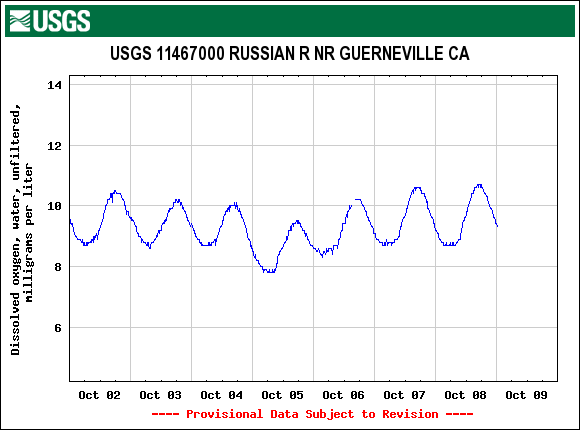
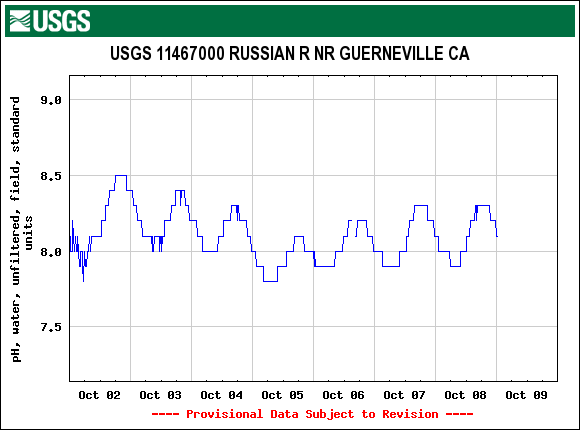
Do you think Copeland Creek contributed any of the water that made it to the gauge during and after this rainstorm? Why or why not?
Copeland Creek
- What is the channel form of Copeland Creek?
- What bedforms do you see?
- What is the distribution of grain sizes at the surface of the river bed?
- Is the distribution the same if you dig down a few centimeters? Why or why not?
- Can you see evidence of the stream meandering or trying to meander?
- What is the current depth of the water? What is the bankful depth?
- Estimate the current discharge of water. Estimate the bankful discharge of water.
- What is the width of the creek? Does it depend on depth?
- How does vegetation affect this creek? Large woody debris?
- Is the creek eroding or aggrading over time?
- Is there any geomorphic activity happening today?